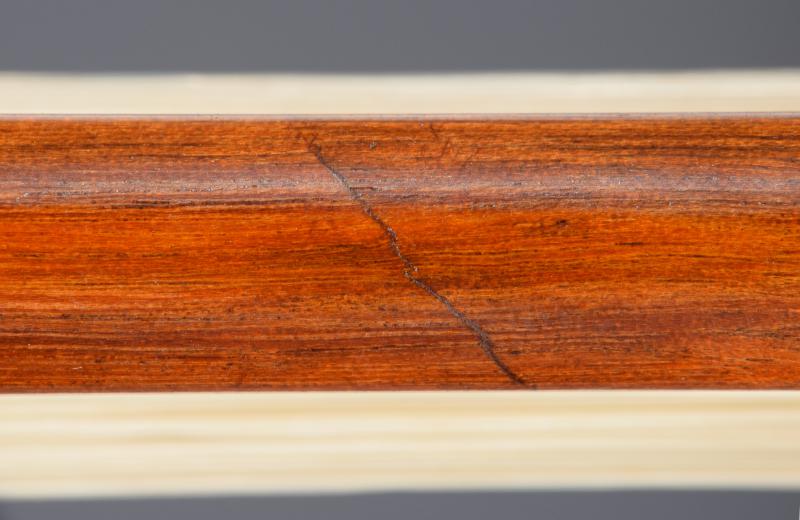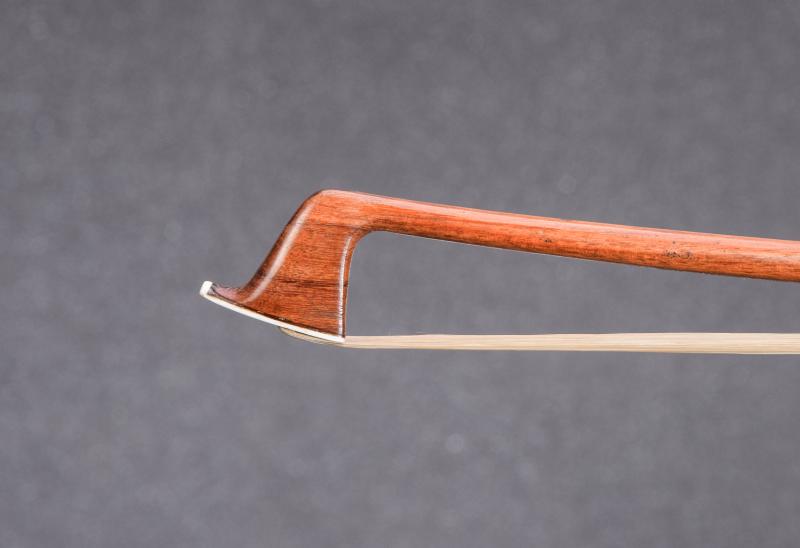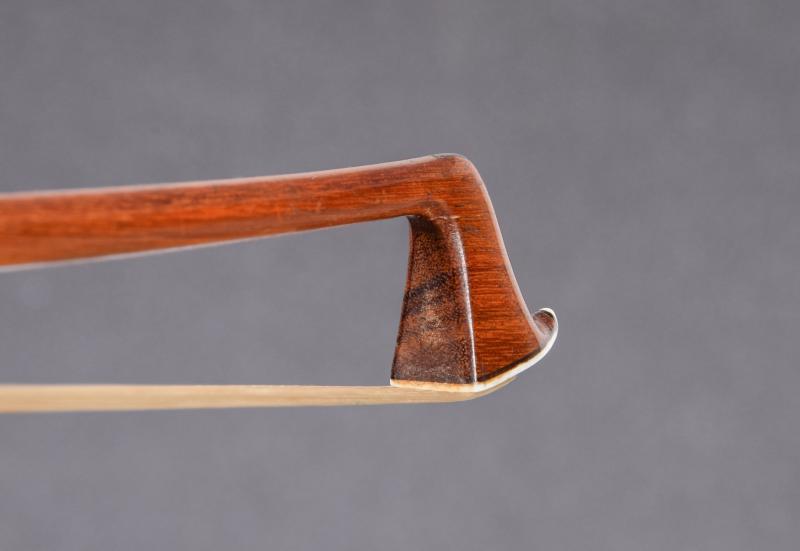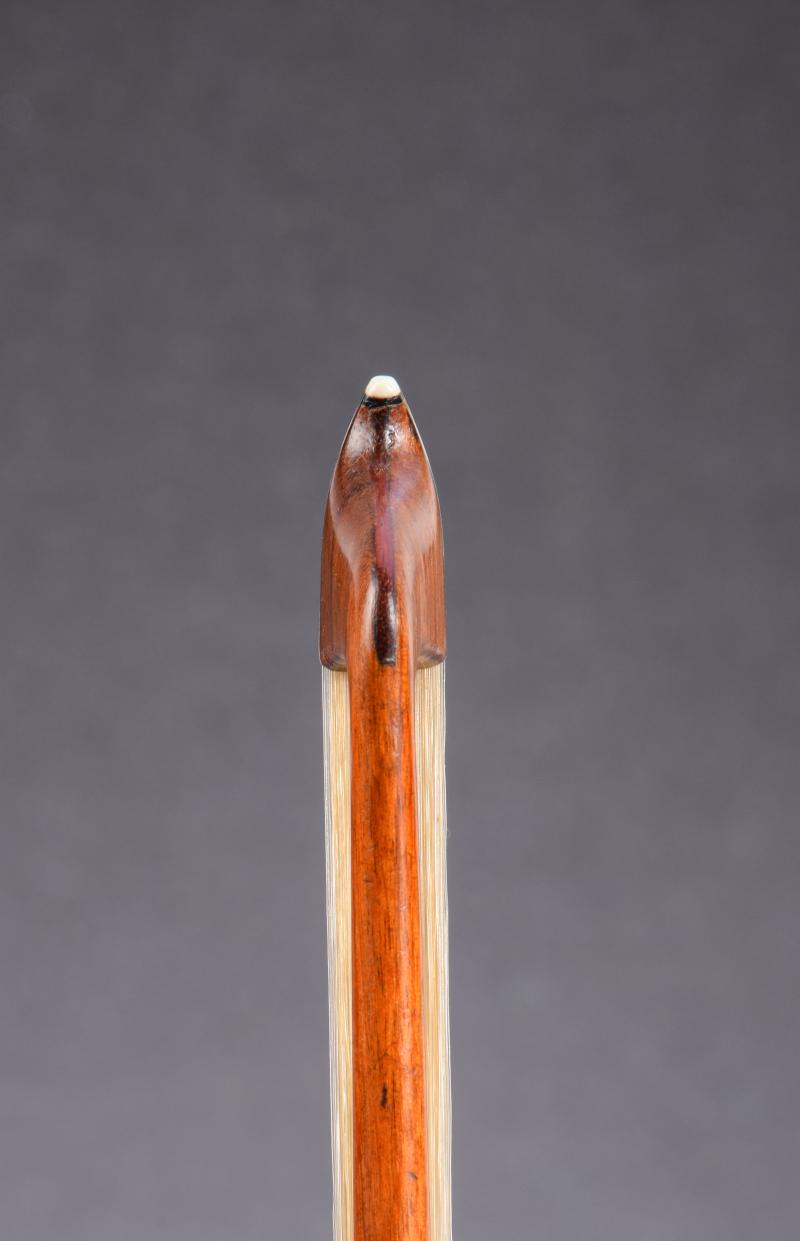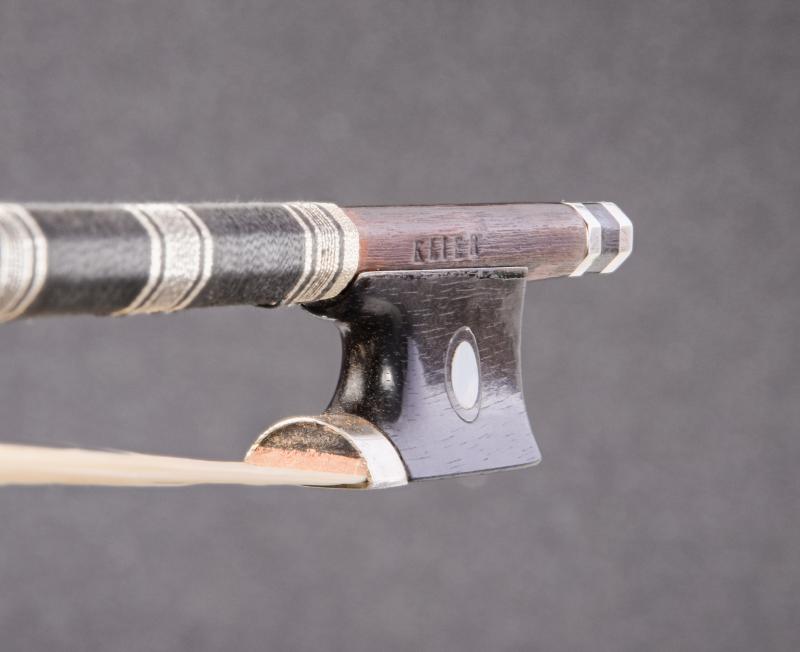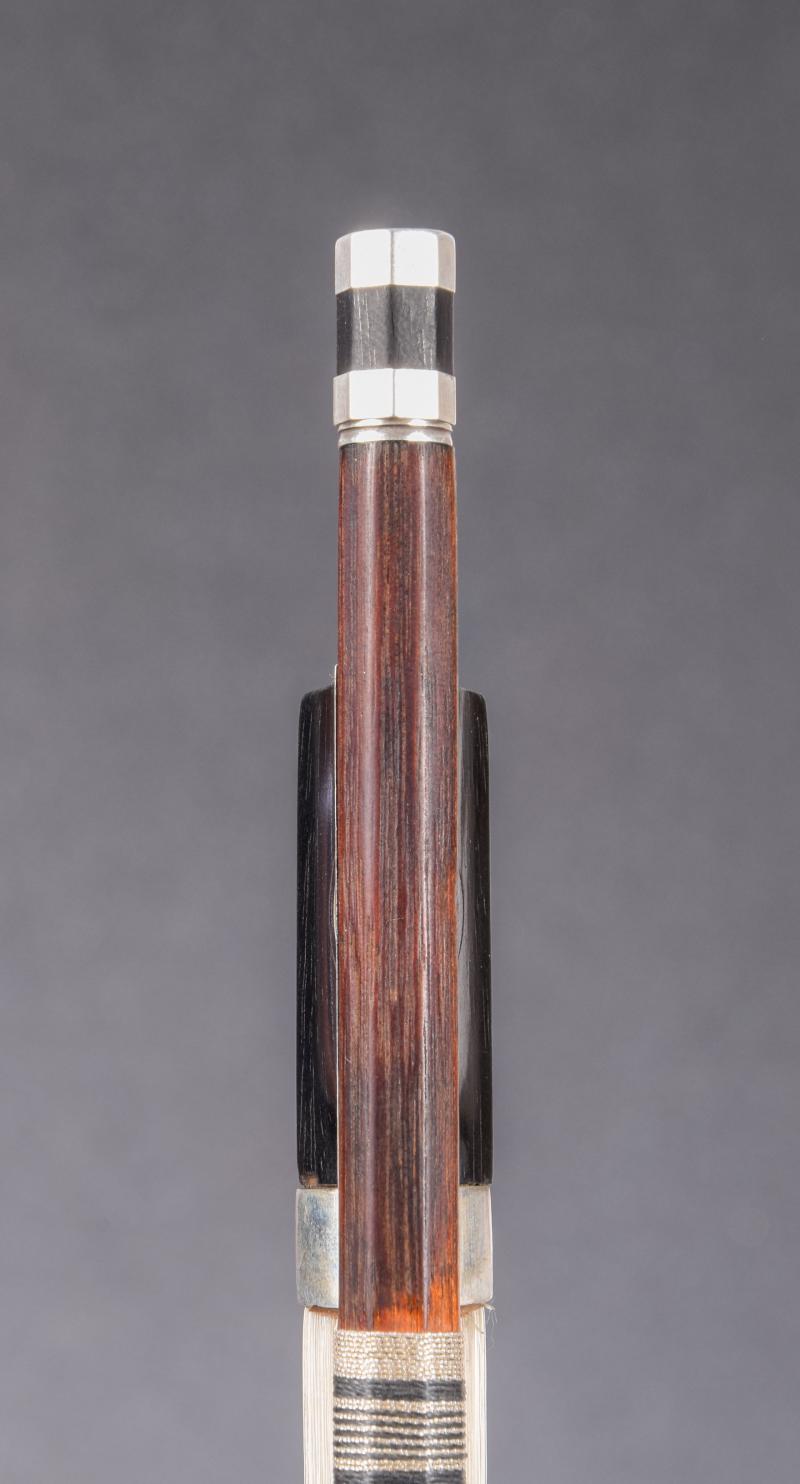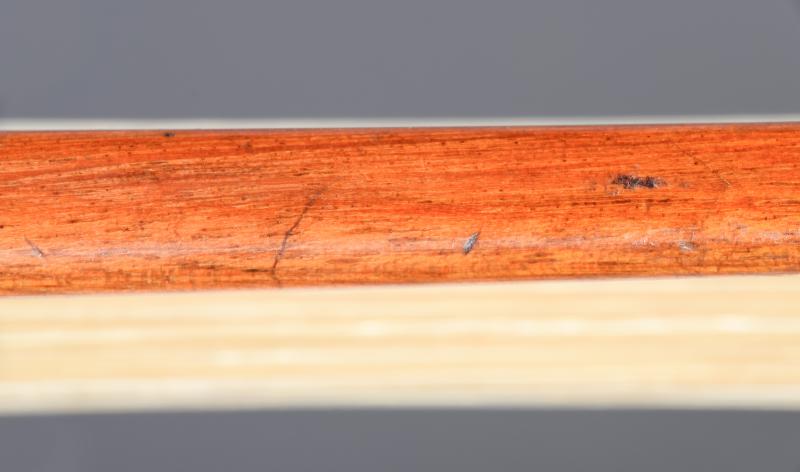Antal Klier
violin bow c. 1910
2015. október 2.
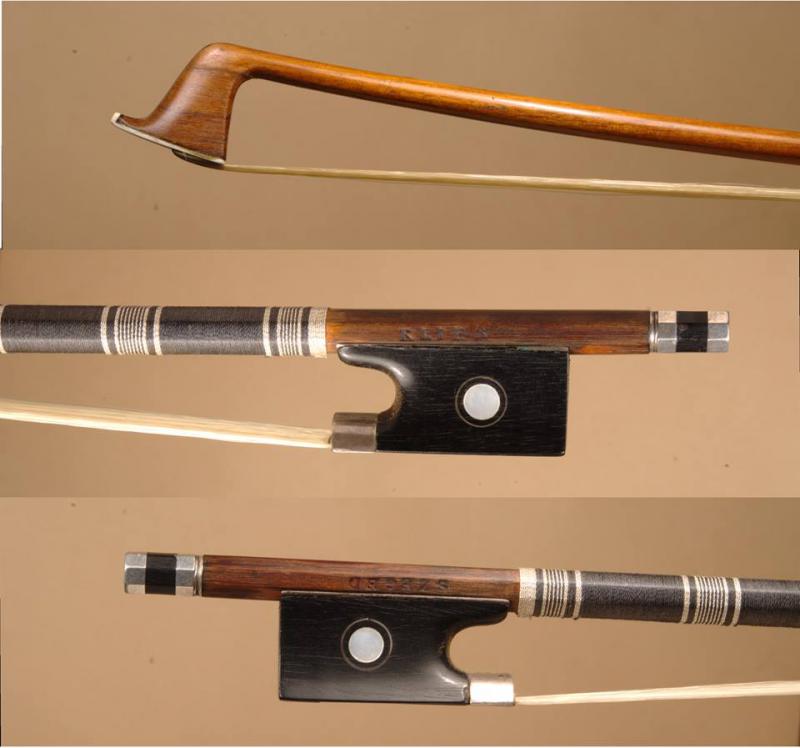
This violin bow was made by Antal Klier in Szeged around 1910. This unique piece of work was part of the Géza Molnár Collection.
vissza a rovatba:
Bows 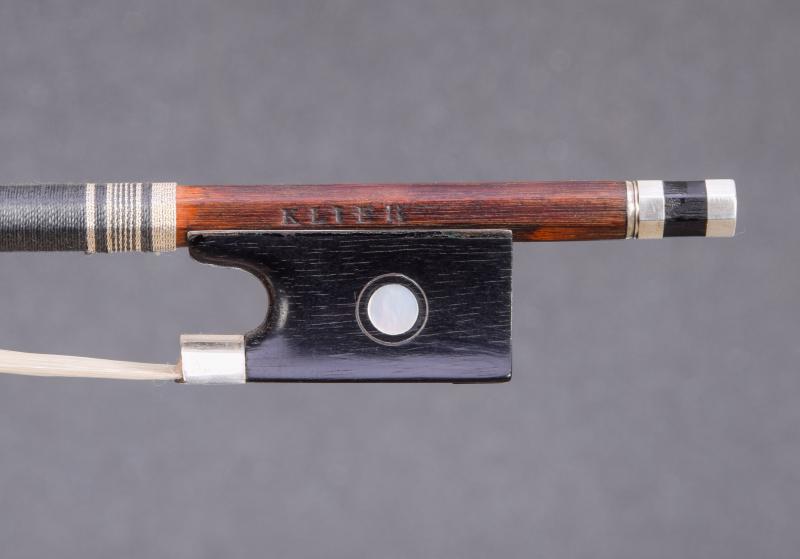
The ebony frog with silver settings sideview. The throat is open, the ferrule is high, the thumb piece is thin and rounded.
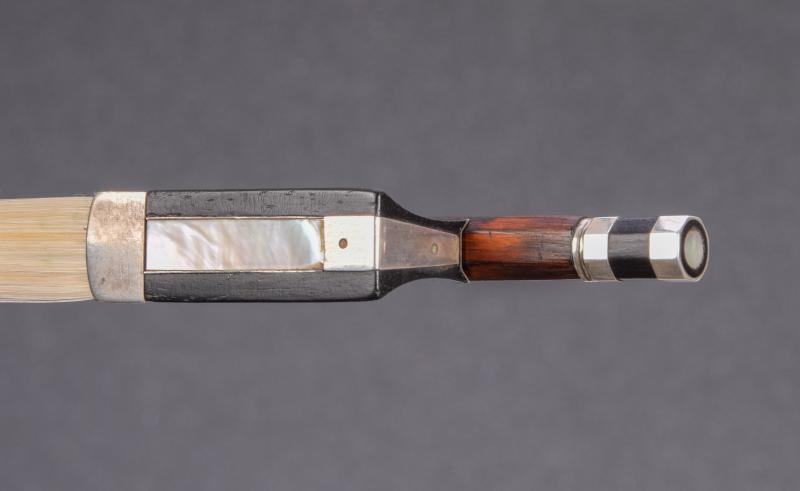
The silver heel is made of one piece, the lower part is almost square shaped and pinned with nickel silver at two places. The ferrule has an arching from underside view. The slide is silver mounted. The inside of the button rings are round, the eye is relatively small.
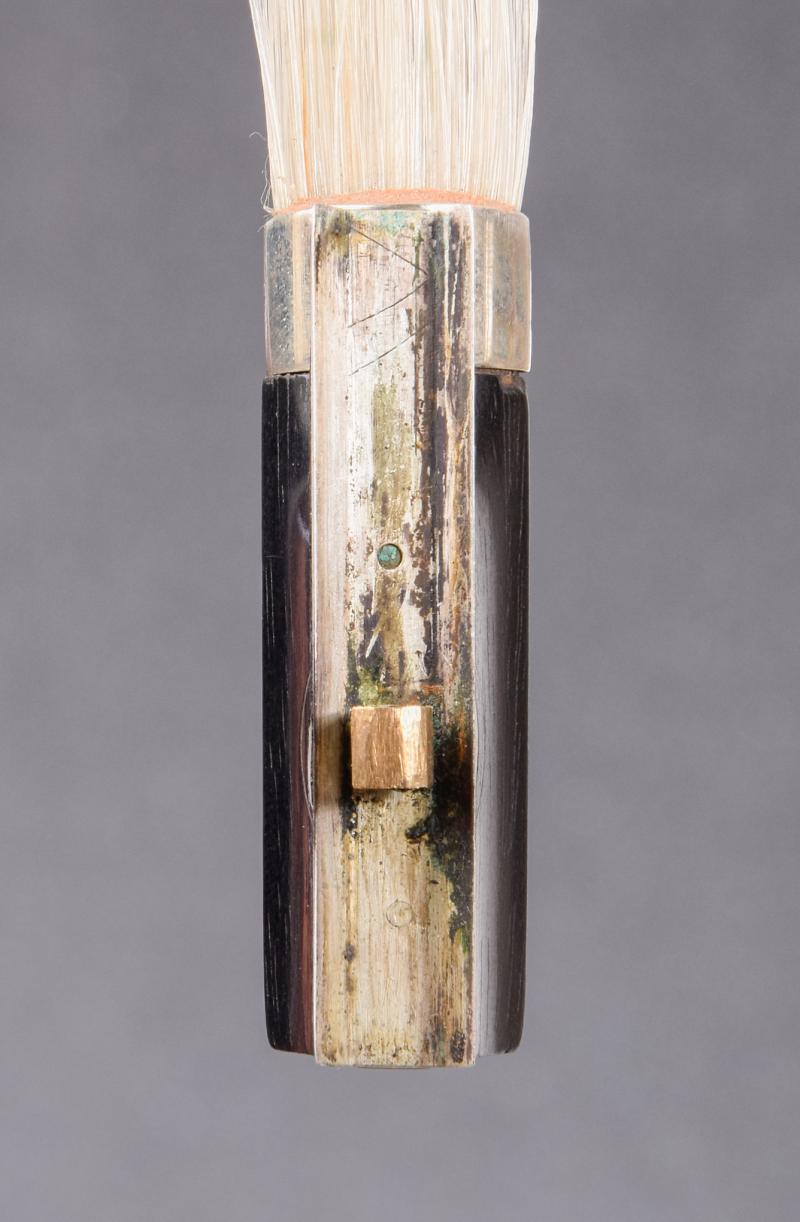
The underslide is pinned with nickel silver. There is a Roman numeral, a ’IV’ sign above the thumb-piece.
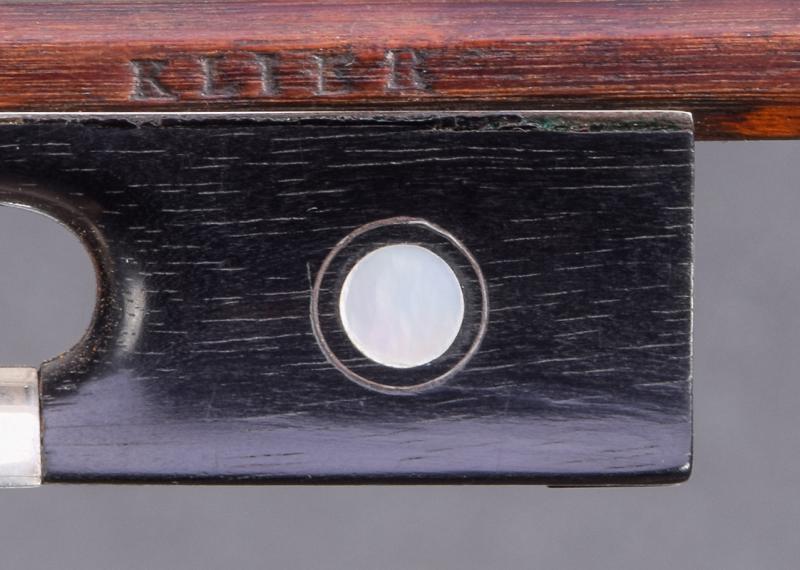
The special Parisian eye makes the frog very interesting — the pearl eye and the ebony ring made of the ebony of the frog is surrounded by a very thin silver ring. The master drilled the place of the pearl eye and the ring at the same time with a special drill, the ring was only bent, it is not soldered.
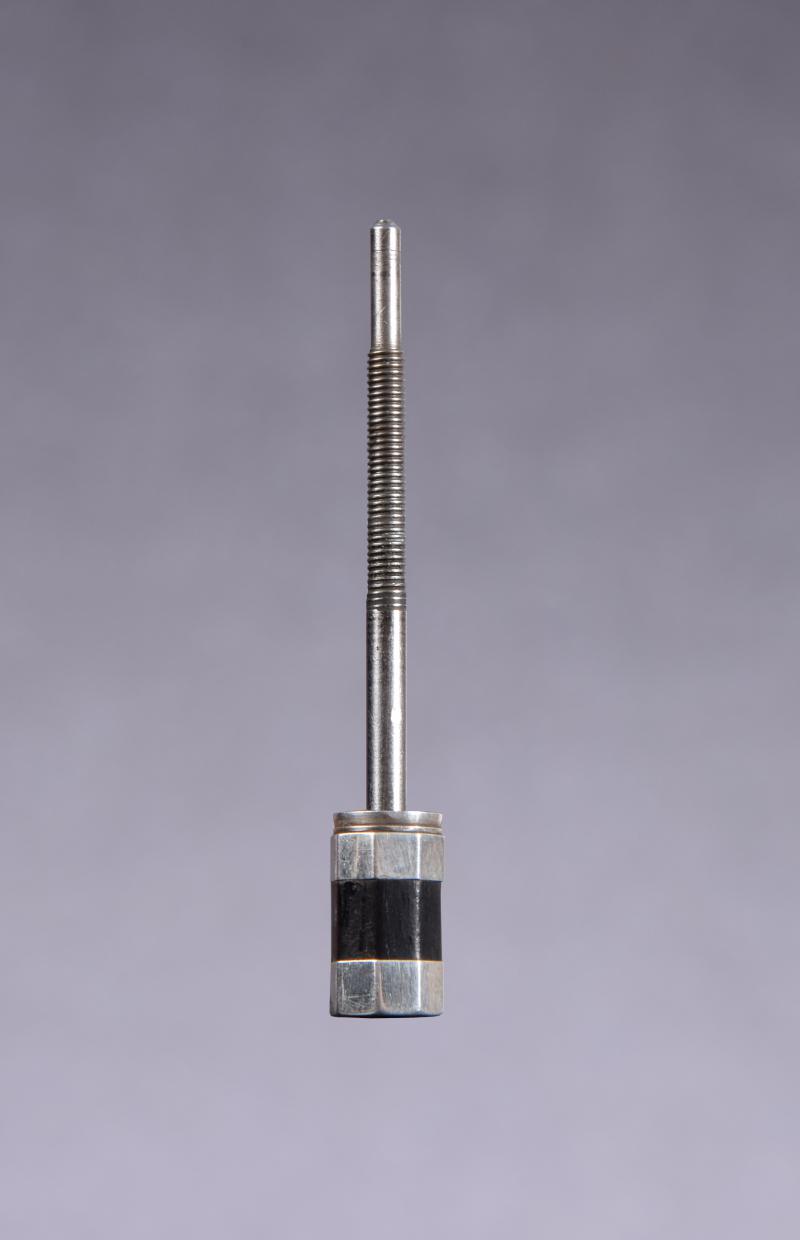
The adjuster consists of three parts. There are two round silver button rings sitting on an ebony core. Only the back ring is pinned with nickel silver.
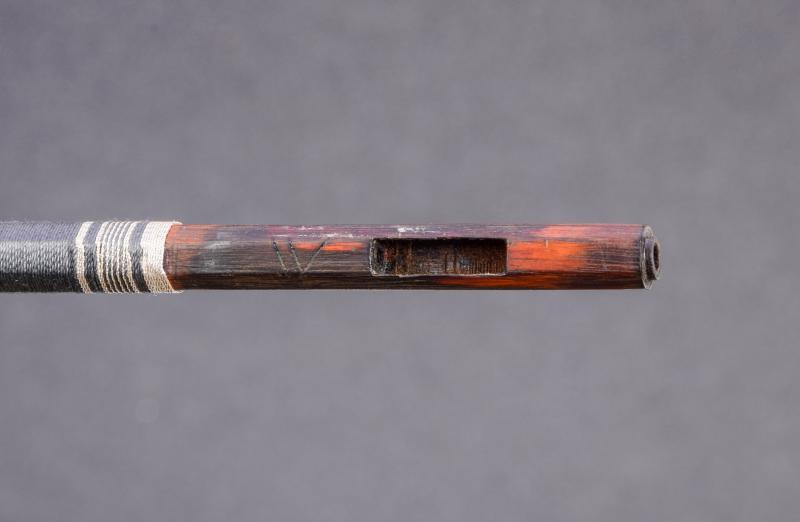
End of stick, mortice and nipple. Similar to the slide we can see a Roman numeral, the 'IV' sign here. These signs are used when masters work on more than one bow at a time. Each stick has it's own frog, in order not to confuse the bows they use these signs.
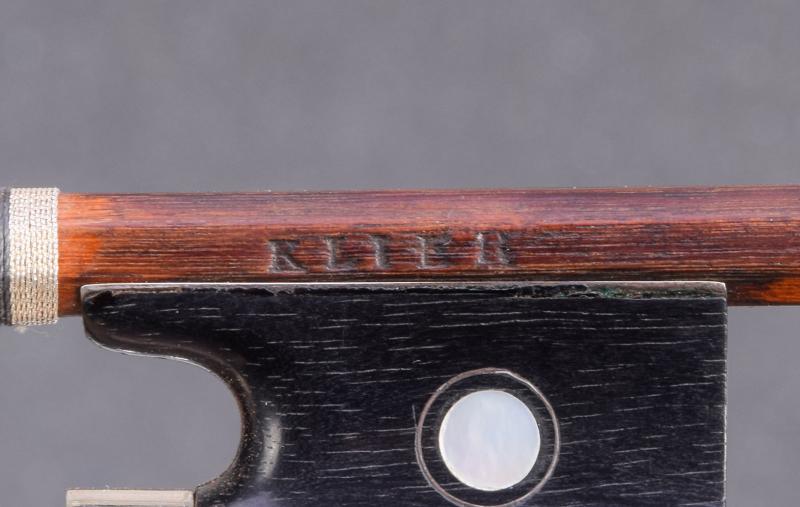
The stamp of Antal Klier can be seen here. On one side of the stick he burnt the letters of his name, KLIER, letter by letter, on the back the word SZEGED can be found.
